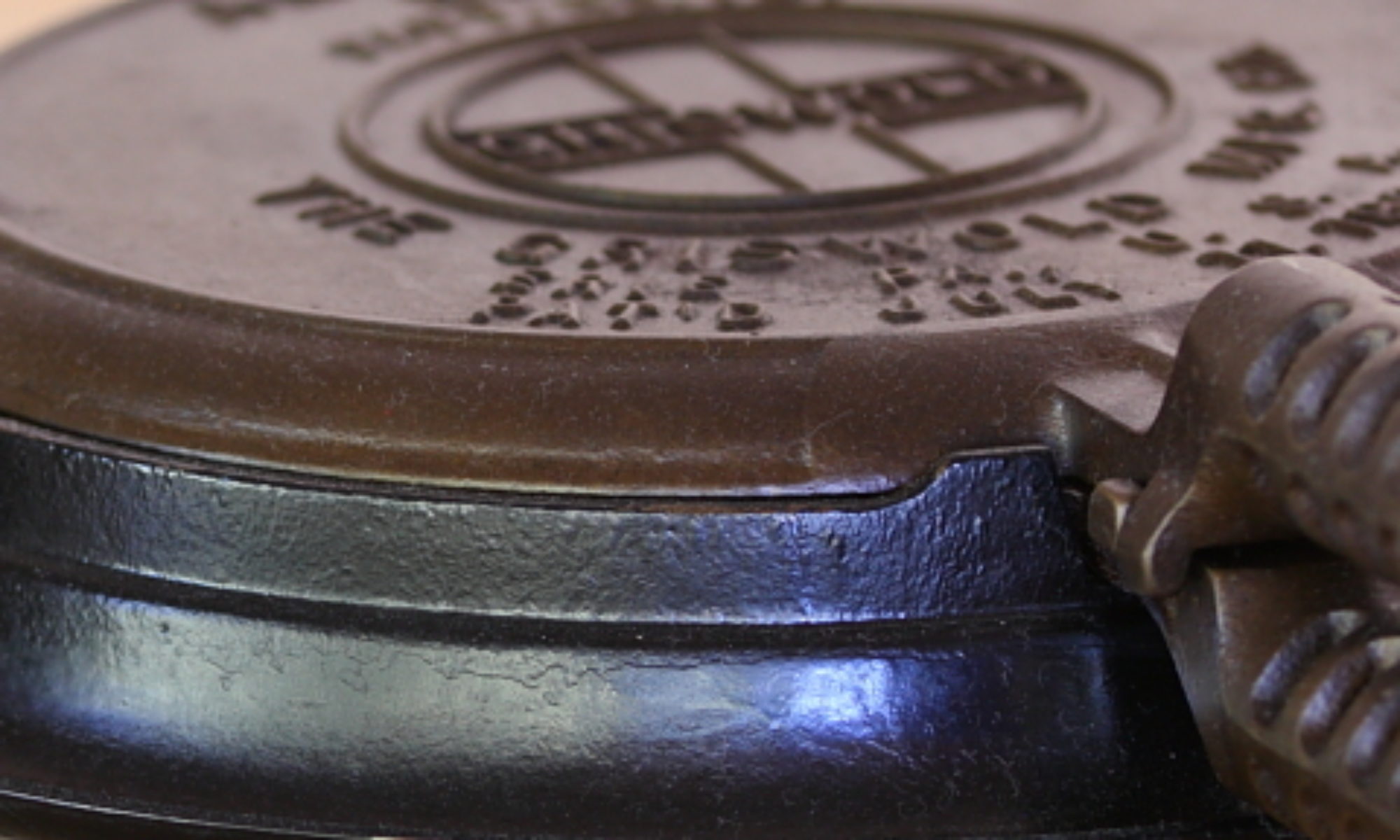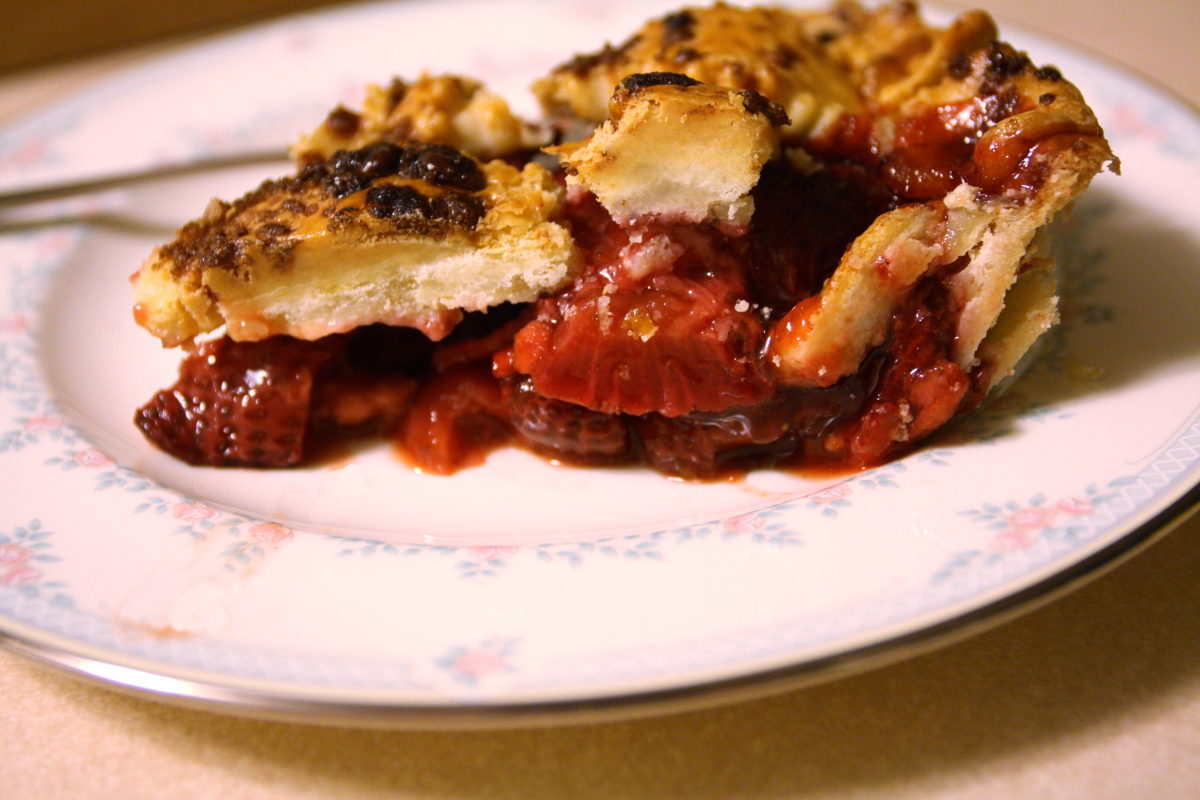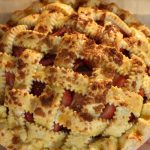
Right now, it seems as though every store in the area is having amazing deals on strawberries. We’re talking the buck-a-pound deals, so we just couldn’t resist, and picked up a couple bucks’ worth with just this pie in mind. To be completely honest, we would have preferred buying organic strawberries (the way commercial strawberries are grown is about the most destructive thing you can do to the soil, and without soil, well….), but we were lured by the low price.
Actually, that’s an important point about the way produce is sold. It’s all about cost. We can’t think of any other thing sold in such a manner, just produce. Limited information about where it was grown, what variety, the owners of the farm, etc.; basically, you have nothing except some generic food item. Odd, when you think about it. Could you imagine cars or clothes being sold that way? We thought not. Probably because people are concerned about brand and status when it’s something others will see, yet, when it comes to something that will keep them alive — ah, no interest.
All right, enough editorializing; let’s scratch up some pie: Strawberry Balsamic Pie. This recipe comes from The Four & Twenty Blackbirds Pie Book, by Emily Elsen and Melissa Elsen, and all we did was use our favorite crust recipe and leave out the dash or two of bitters that was called for in the original recipe.
Strawberry Balsamic Pie
Ingredients
- 2 Pate Briseé doughs chilled and ready to roll. (see note)
- 2 pounds fresh strawberries rinsed and quartered
- 3 Tbs granulated sugar
- 1 small baking apple
- 2 Tbs balsamic vinegar
- 1/4 cup granulated sugar (50 g)
- 3/4 cup packed brown sugar (150 g)
- 3 Tbs cornstarch (25 g)
- 2 grinds finely ground black pepper
- 1/2 tsp kosher salt
- Egg wash 1 egg, 1 tsp water
- Brown sugar for finishing
Instructions
- Place strawberries in a colander and toss with the 3 tablespoons of sugar. Let drain for 1 hour, tossing strawberries every 15 minutes to help remove liquid.
- Roll out one piece of dough and fit to a 9-inch pie plate leaving an inch of overhang. Prick the bottom with a fork and refrigerate. Roll out the other dough and leave between sheets of parchment. Refrigerate.
- Place the strawberries in a large bowl, add peeled and grated apple and vinegar. Toss.
- In a small bowl, mix together brown sugar, the 1/4 cup sugar, cornstarch, pepper, and salt.
- Add dry ingredients to strawberries and fold until everything is moistened.
- Preheat oven to 425°F. Place one rack in the lowest position and one in the middle. Place a rimmed baking sheet on the lowest rack.
- Fill pie shell with strawberries and construct a lattice for the top. Crimp around edges.
- Brush top crust with egg wash and sprinkle with brown sugar.
- Place on rimmed sheet on the lowest rack and bake 20 to 25 minutes or until the crust is beginning to brown.
- Lower oven temperature to 375°F and move pie, rimmed sheet and all, to the middle rack.
- Continue to bake 35 to 45 minutes or until the filling is bubbling.
- Cool completely on a rack.
Notes
Ingredient discussion:
You’ve already heard our diatribe about strawberries, which we don’t follow very well, but we will suggest that you buy a pretty good balsamic vinegar. The prices are all over the map, with the cheapest being not very good, and the most expensive, probably not worth it. We suggest something in the middle of the range. We like Trader Joe’s Balsamic Vinegar of Modena with the red label. It’s good and not too pricy. For the apple, we used a Cameo, but if we could get one, we’d go with a Northern Spy.
Procedure in detail:
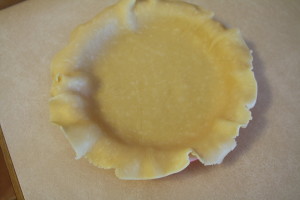
Roll out dough. Roll out one of the pie crusts and fit it into your 9-inch pie pan, leaving about an inch of overhang. Prick the bottom of the crust with a fork. Remember to roll the dough between two pieces of parchment so that you don’t need to add extra flour. Roll out the other pie crust, and leave between the parchment sheets. Refrigerate both until needed.
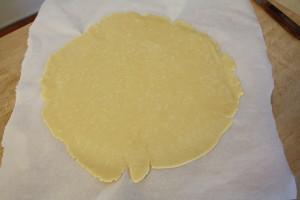
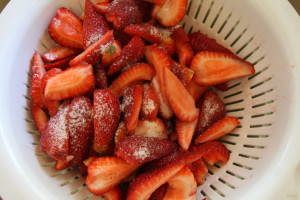
Macerate strawberries. Rinse and hull the strawberries. Quarter each and toss into a colander set over a bowl. Sprinkle with 3 tablespoons of sugar, and stir. Let sit for 1 hour, stirring every 15 minutes. This will toughen the fruit, and will remove some of the juices.
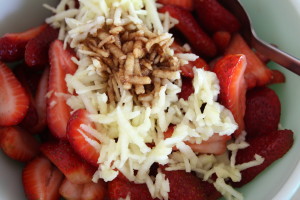
Add apple and vinegar. Place the berries in a bowl, and grate the peeled apple over them. Add the balsamic vinegar, and stir to combine.
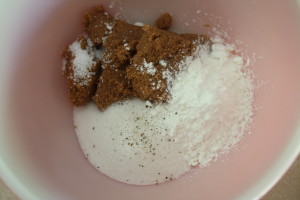
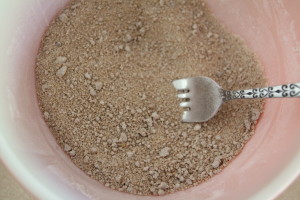
Mix drys. In a medium bowl, mix together the brown sugar, sugar, cornstarch, pepper, and salt. As a reminder to those who use a scale, use it to measure brown sugar. It’s far easier than packing it into a measuring cup. We also did that for our cornstarch, since we were near the end of the box and couldn’t easily scoop it out with a measuring spoon. Once you’ve measured out everything, use a fork to break up the brown sugar and mix everything fairly thoroughly.
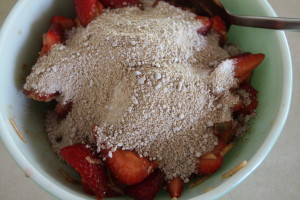
Fold. Pour the dry mixture over the berries and fold until everything is moistened. It’ll take about 10 folds, at most.
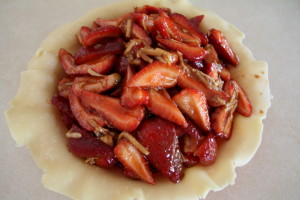
Fill. Remember those pie crusts that we rolled out earlier? Get them out of the fridge and add the filling. It should be quite full, but don’t worry, because we’ll make sure to bake the pie on a rimmed baking sheet to catch any overflow (you only forget to do this once).
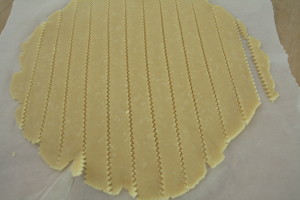
Cut crust. Now, let’s make the lattice crust. It’s not as hard as you might think. First, take the crust that’s between the pieces of parchment, loosen it from both pieces, and uncover it on one side. Cut it into strips 1/2-3/4 inch wide. We used a fancy fluted wheel cutter (just because we had one). Great! We’re a quarter of the way done.
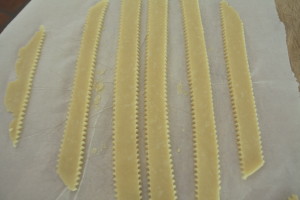
Lay vertical strips. Take every other strip and place them on the pie about 1/2-inch apart, oriented in the same direction. See, no problem so far.
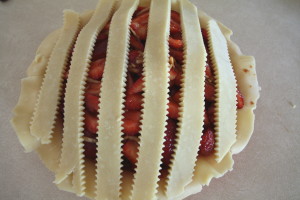
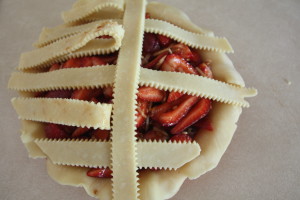
Weave. Rotate the pie 90° and fold back every other strip to about the middle of the pie. Still with us? Thought so. Now, of the strips you haven’t used yet, take the one closest to the middle, and place it right next to the folded strips. Then fold all the horizontal strips back. Great! We have one strip woven in, let’s do another.
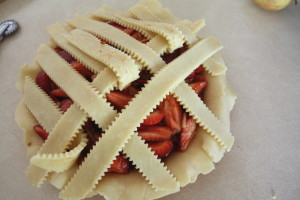
Weave again. Fold back every other horizontal strip, similar to before, but use the strips that haven’t been folded back yet. Fold these back over the vertical strip. From the unused strip, take the next one nearest the center, and place it right next to that lone vertical strip. Fold everything back.
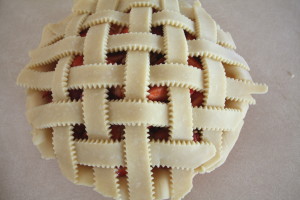
Repeat. Keep folding and weaving until you have a nice lattice. Don’t worry about the edge yet. We’ll do that next. See, you have a nice looking weave, and it wasn’t as hard as you thought, was it?
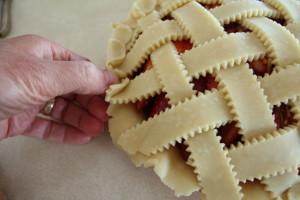
Roll edge. Work your way around the edge of the pie, folding the overhang up and over the lattice and pressing down. We find it easiest to do the folding first and then go back and use a finger and thumb to pinch it into a nice-looking edge, but if you can do it all in one go, do so, by all means.
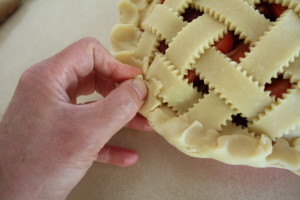
Pinch edge. Work your way around the edge of the pie, making a nice-looking edge. We just pinch the dough between out finger and thumb, and press down while pressing in from the edge with our other hand. It takes some practice, but no one will notice if it isn’t perfect.
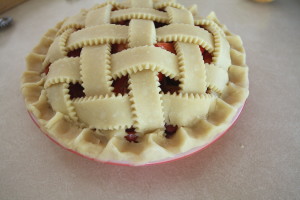
Refrigerate. Place the pie in the refrigerator for 15 minutes.
Preheat oven to 425°F. Place a rack in the lowest position and one in the middle (we’ll use both), and then place a rimmed baking sheet on the bottom rack. We lined ours with the pieces of parchment to make it easier to clean later.
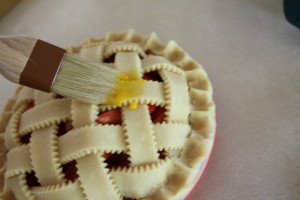
Make egg wash. In a small bowl, whisk together an egg and a teaspoon of water. This egg wash is going to make your crust come out flaky and golden brown.
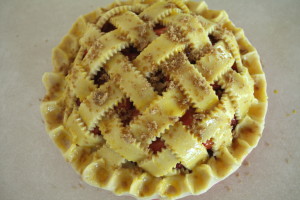
Finish crust. Use a pastry brush to brush the top of the crust with egg wash. Brush the lattice and brush the edge. Finally, finish up by sprinkling a small amount of brown sugar (the original recipe called for Demerara sugar, which is a type of brown sugar) across the crust. Use the leftover egg for an omelet or something.
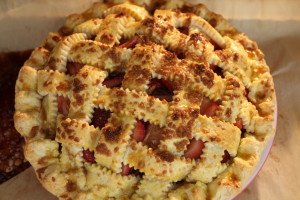
Bake. Place the pie on the rimmed baking sheet on the bottom shelf and bake until the crust begins to brown, 20 to 25 minutes.
Lower temperature. Once the crust is browning, lower the over temperature to 375°F and move the pie, baking sheet and all, to the middle shelf. Continue baking for 35 to 45 minutes, or until the filling is bubbling away.
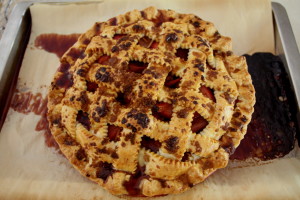
Cool. Remove the pie to a rack and let cool completely before serving, 2 to 3 hours.
This pie has the perfect level of sweetness, not like most strawberry pies, which are often way too sweet for our taste. The only thing that we would say is that the bottom crust turned out soggy — a problem when making fruit pies — so we would suggest macerating the strawberries even longer. Or perhaps, add some more of the granulated sugar during the maceration, but decrease the amount that you put into the pie. Don’t disturb the ratio of strawberry to sugar. It’s perfect. Like most fruit pies, this was really easy to put together, even though it seems as though we have a bazillion photos, so five stars. Perfect for Easter dessert.
